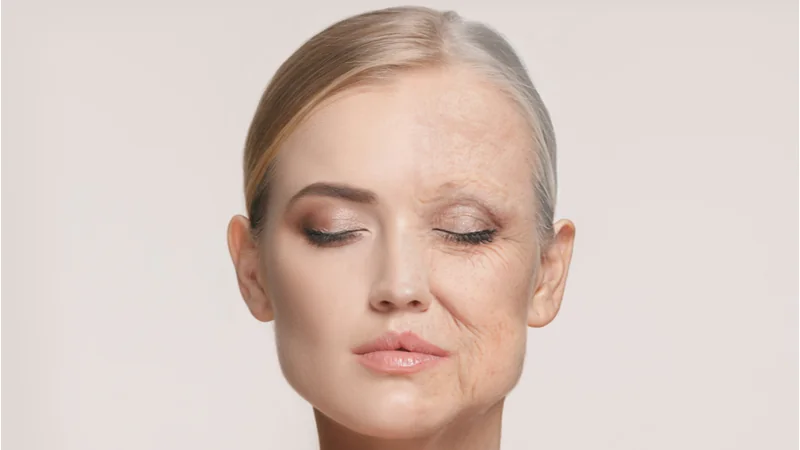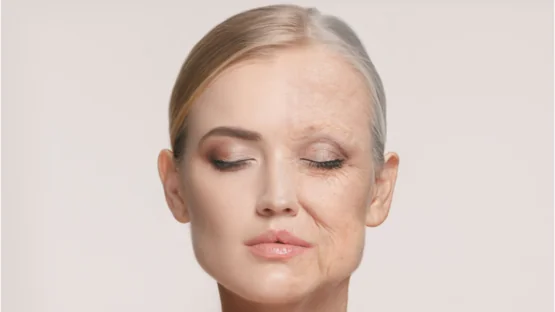A group of researchers successfully alleviated aspects of skin aging by treating skin cells with the NAD precursor nicotinamide [1].
Hard work done by skin leads to its burnout
Skin aging might not be lethal, apart from the increased risk of skin cancer, but it’s surely conspicuous, frustrating, and emblematic of organismal aging. Being our first line of defense against the elements and all the pathogens that are lurking around, skin, especially its outer layer, the epidermis, is one of the first tissues to experience aging [2]. Since it takes a lot of damage, skin also has high levels of cellular senescence, which is a mechanism that prevents damaged cells from proliferating. As one paper puts it, all this makes skin “an ideal organ to observe and analyze the impact of extrinsic and intrinsic drivers of aging” [3].
In addition to being subjected to faster-than-usual aging, our skin is also characterized by fast turnover of cells. Keratinocytes that constitute 90% of skin cells differentiate from skin stem cells in deeper skin layers and then make their journey to the outer layers. Along the way, they undergo several more divisions and stages of differentiation. Eventually, they reach the top through terminal differentiation and are shed away as dead skin in a process called desquamation.
Ultraviolet (UV) light is a major cause of skin aging, which led to the appearance of the term photoaging. Like any radiation, UV light rips through the cells, inducing DNA strand breaks. DNA damage is one of the known causes of cellular senescence and carcinogenic mutations. As the saying in the longevity community goes, the only real anti-aging cream today is sunscreen.
NAD: the electrician and the repair guy
In this new paper, researchers investigated the effect of nicotinamide (NAM) treatment on skin cells exposed to UV. NAM is a precursor to NAD, which is a simple but indispensable molecule that facilitates chemical reactions by taking and donating electrons. It exists in two forms: NAD+, an oxidizing agent that takes electrons from other molecules, and NADH, which is NAD+ after it acquired an electron.
NAD also plays an important role in DNA repair, being a cofactor for the sirtuin family of enzymes. NAD levels decline with age, which is considered one of the mechanisms of aging [4]. In the skin, NAM supplementation is known to delay terminal differentiation and promote the proliferation of keratinocytes.
NAM is also a form of vitamin B3. It is found in a wide variety of foods, both animal- and plant-based, and is well absorbed, so people rarely develop B3 deficiency. However, many longevity enthusiasts take NAD precursors as daily supplements, such as NMN (nicotinamide mononucleotide). We do not endorse this practice due to the lack of solid data.
NAM brings improvement
The researchers used two types of cellular models: cultured keratinocytes and a 3D model of the skin, complete with layers. Irradiating these with UVB light, which falls into the UV frequency range, resulted in accelerated keratinocyte senescence, loss of proliferation, and premature terminal differentiation, which are all hallmarks of skin aging. UV also caused morphological changes in the skin structure, with the epidermis becoming thinner. UV irradiation also decreased energy metabolism levels in the cells.
NAM treatment was able to partially alleviate the damage. It improved energy metabolism, prevented senescence and premature terminal differentiation of keratinocytes, and restored skin morphology. The researchers suggest that NAM treatment achieved all this mainly by promoting DNA repair.
Shortly after the burst of UV irradiation, the levels of a DNA breakage marker called CPD (cyclobutane pyrimidine dimers) shot up. In controls that did not receive NAM, it went down by as much as 74% after two days, indicating that even in the absence of NAM supplementation, DNA repair mechanisms did a decent job. However, in the NAM group, the decline in CPD levels compared to the pre-irradiation state was even more pronounced: 85%. The difference might seem small, but it is not, considering that any unresolved DNA damage is potentially harmful.
Conclusion
The link between NAD and organismal aging has been well-established, but skin aging is a unique phenomenon. This new study shows how NAD replenishment via NAM treatment can partially reverse concrete aspects of skin aging induced by exposure to ultraviolet light. Exciting as it is, this is early-stage research that will probably not get translated into a new skin lotion any time soon, so for now, you are advised to protect your skin from “photoaging” by using sunscreen.
Literature
[1] Tan, C. Y. R., Tan, C. L., Chin, T., Morenc, M., Ho, C. Y., Rovito, H. A., … & Bellanger, S. (2021). Nicotinamide Prevents UVB-and Oxidative Stress-Induced Photoaging in Human Primary Keratinocytes. Journal of Investigative Dermatology.
[2] Krutmann, J., Schikowski, T., Morita, A., & Berneburg, M. (2021). Environmentally-induced (extrinsic) skin aging: Exposomal factors and underlying mechanisms. Journal of Investigative Dermatology.
[3] Gruber, F., Kremslehner, C., Eckhart, L., & Tschachler, E. (2020). Cell aging and cellular senescence in skin aging—Recent advances in fibroblast and keratinocyte biology. Experimental gerontology, 130, 110780.
[4] Schultz, M. B., & Sinclair, D. A. (2016). Why NAD+ declines during aging: It’s destroyed. Cell metabolism, 23(6), 965-966.




